- Home
- Prelims
- Mains
- Current Affairs
- Study Materials
- Test Series
Dec 12, 2021
PANEL FLAGS POOR FUND UTILISATION IN BETI BACHAO, BETI PADHAO SCHEME
Recently, the fifth report on ‘Empowerment of women through education with special reference to Beti Bachao Beti Padhao’ was released.
Report:
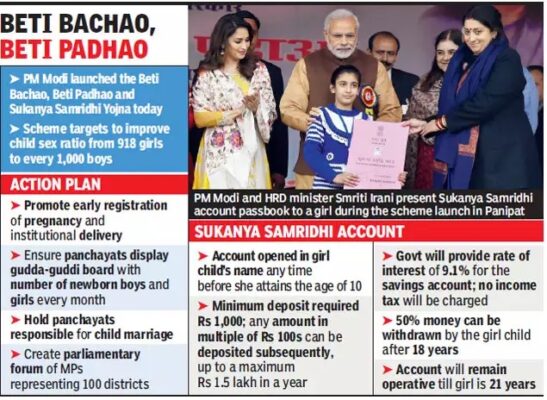
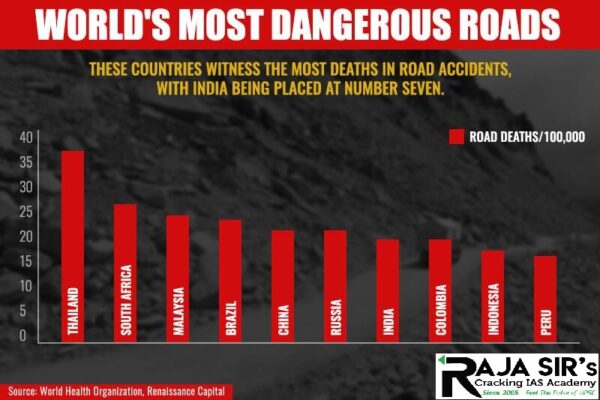
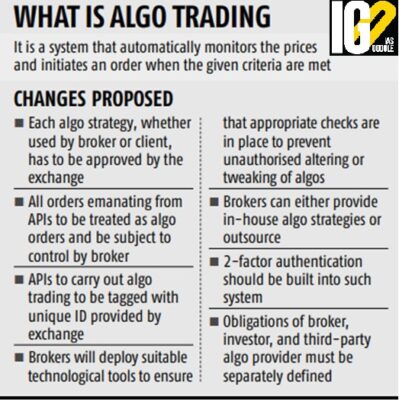

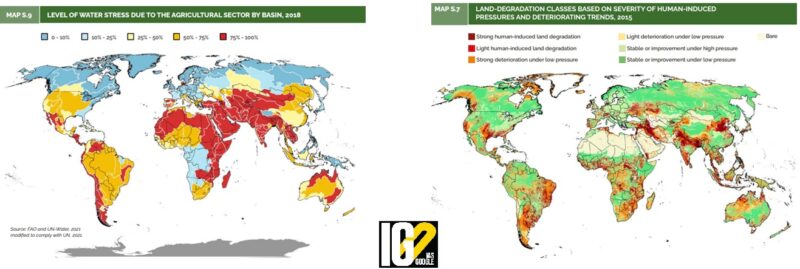 Current patterns of agri-food production are not sustainable:
Current patterns of agri-food production are not sustainable:
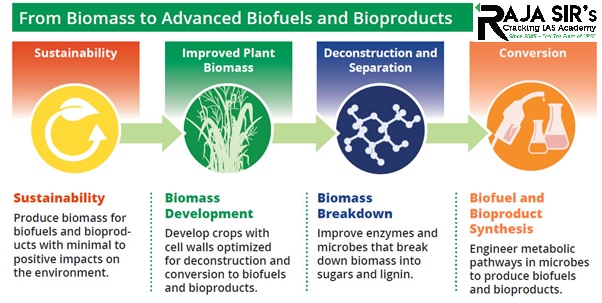
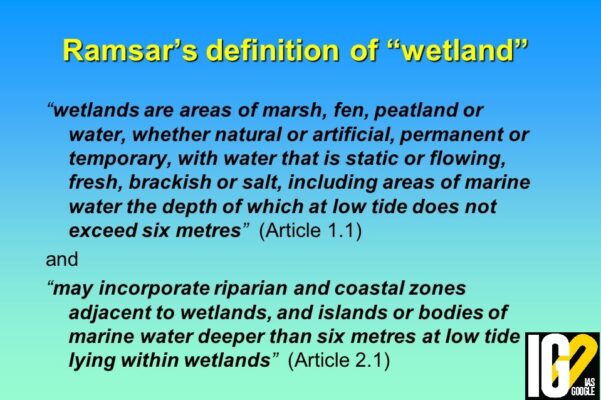
 Montreux Record
Montreux Record
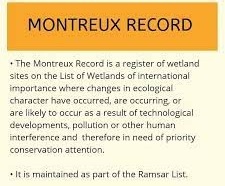
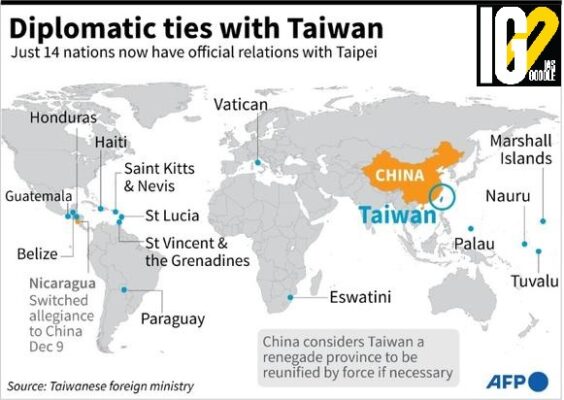
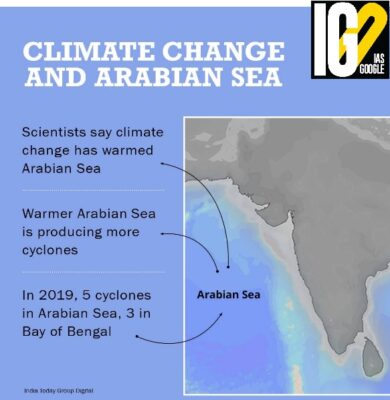




- Nearly 80 %of the funds for the Beti Bachao, Beti Padhao scheme has been used for its advertising and not on sectoral interventions such as in health and education for women.
- Only 13 percent of the funds, of the total funds released by Centre, has been spent by the states.

- It is a tri-ministerial scheme with the Women and Child Development Ministry as the nodal ministry.
- The other two ministries involved are Health and Family Welfare and Education (Department of School Education and Literacy).
- It is a 100 percent Centrally Sponsored Scheme.
- The programme is being implemented across 405 districts in the country.
- There is a poor and uncoordinated on-ground civic body support, in the form of local governance in districts with poor sex ratio.
- Top local officials are often regularly transferred, and newly appointed officials need time to be educated and sensitised to the needs of girl children in their respective districts.
- In poorer and illiterate section of society, woman’s bigger role in life is not a career, but to be a subservient housewife.
- This mindset is the basis of considering women to be inferior.
- The lack of the culture of accountability and measurable goals make this a weak point.
- The government should focus on planned expenditure allocation for sectoral interventions in education and health.
- Civil society workers engaged in addressing issues like female feticide, education, and welfare services for females must regularly meet and chart out action plans with Divisional Commissioner and other representatives.
- Social workers must also be supported by local police, members of legislative assembly, and other influential people.
- The campaign must extend to making parents, brothers and Indian be proud of a woman’s autonomy.
- It also must seek to educate men those women are their equal – not only at school but in every arena.
- The success of ‘Beti Bachao Beti Padhao’, needs firm and measurable accountability on the part of the civic administration.

- India tops the world in road crash deaths and injuries.
- It accounts for 11 % of the global death in road accidents.
- It accounts for 4.5 lakh road crashes per annum, in which 1.5 lakh people die.
- It has 1 percent of the world's vehicles, witnessing 53 road crashes every hour; killing 1 person every 4 minutes.
- Vehicle design and condition
- Road engineering, speeding
- Drunken driving/ consumption of alcohol and drugs
- Driving on the wrong side
- Jumping the red light
- Use of mobile phones.
- The road crash fatality rate is three times higher in low-income countries compared to high-income countries especially in India.
- The crash costs at Rs 5.96 lakh crore or 3.14 per cent of gross domestic product (GDP).
- The road crash and serious injury cost estimate at 7.5 per cent of India's GDP or Rs 12.9 lakh crore for 2016.
- Vulnerable road users are forced to share space with other less vulnerable road users, the income level of an individual has a direct bearing on the mode of transport used.
- This in turn further determines the level of risk faced by a particular road user.
- Daily wage workers and workers employed as casual labourers in informal activities are more vulnerable compared to workers engaged in regular activities.
- The socio-economic costs of road crashes are Rs 1,47,114 crore in India, equivalent to 0.77 per cent of the country's GDP.
- At the individual level, road crash injuries and deaths impose a severe financial burden and push entire households into poverty and the already poor into debt.
- 76.2 per cent of people killed in road crashes are in their prime working-age, 18-45 years.
- The Ministry implements a scheme for undertaking publicity measures and awareness campaigns on road safety to create awareness among road users through the electronic media, print media, NGOs etc.
- Observance of National Road Safety Month/Week every year for spreading awareness and strengthening road safety.
- High priority to identification and rectification of accident-prone spots on national highways.
- Guidelines for pedestrian facilities on national highways for persons with disabilities have been issued.
- Safety standards for automobiles have been improved including airbags, antilock-braking system (ABS), tyres, crash test, etc.
- Scheme for setting up one model inspection & certification centre in each State/UT with Central assistance for testing the fitness of vehicles.
- The Motor Vehicles (Amendment) Act, 2019 provides a scheme for the cashless treatment of victims of the accident during the golden hour.
- The National Highways Authority of India has made provisions for ambulances at all toll plazas on the completed corridor of National Highways.

- Algorithmic trading refers to any order that is generated using automated execution logic.
- The Algorithmic trading system automatically monitors the livestock prices and initiates an order when the given criteria are met.
- It frees the trader from having to monitor livestock prices and initiate manual order placement.
- The Algorithm deployed by retail investors using APIs (application programming interfaces), neither exchanges nor brokers can identify if the particular trade emanating from the API link is an Algorithm or a non- Algorithm trade.
- All orders emanating from an API should be treated as an Algorithm order and be subject to control by a stockbroker.
- The APIs to carry out Algorithm trading should be tagged with the unique Algorithm ID provided by the stock exchange approving the Algorithm.
- It is the regulatory body for securities and commodity markets in India under the jurisdiction of the Ministry of Finance, Government of India.
- It was established in 1988 and given Statutory Powers in January 1992 through the SEBI Act, 1992.
- To protect the interests of investors in securities and to promote the development.
- It regulates the operations of depositories, participants, custodians of securities, foreign portfolio investors, and credit rating agencies.
- It prohibits insider trading, i.e. fraudulent and unfair trade practices related to the securities market.
- For the discharge of its functions efficiently, SEBI has been vested with the following powers:
- To approve by−laws of Securities exchanges.
- To require the Securities exchange to amend their by−laws.
- Inspect the books of accounts and call for periodical returns from recognized Securities exchanges.
- Inspect the books of accounts of financial intermediaries.
- Compel certain companies to list their shares in one or more Securities exchanges.
- Registration of Brokers and sub-brokers.
- India is the third-largest manufacturing hub of steel pipes in the world.
- The production linked incentive scheme has been announced to boost the steel industry.
- Steel is the world's most important engineering and construction material.
- It is an alloy of iron and carbon.
- It is a tough metal made by treating iron with great heat and mixing carbon with it.
- It contains 2% carbon and 1% manganese and small amounts of silicon, phosphorus, sulphur and oxygen.
- Low labour cost-
- India has a cost advantage over China.
- It has managed to capture some of the market vacated by China.
- High-quality steel-
- India has established itself as a credible exporter.
- India has aimed for up-grading to higher energy efficiency levels and the continuous modernization of traditional plants.
- Control in raw material-
- Indian industries are sticklers for certifying, testing, and retesting the raw materials.
- Domestically Manufactured Iron & Steel Products (DMI&SP) Policy-
- Objective- To promote procurement of Made in India steel.
- Steel Scrap Recycling Policy-
- Objective- To enhance the availability of domestically generated scrap.
- Steel Quality Control Orders-
- Objective- To stop manufacturing and import of non-standardized steel.
- Steel Import Monitoring System (SIMS)-
- Objective- To advanced registration of steel imports.
- Production-Linked Incentive (PLI) Scheme in Steel-
- Objective- To be implemented with budgetary outlay of ₹6,322 crore.
- Project Development Cell in the Ministry-
- Objective- To attract and facilitate investment in the steel sector.
- Lack of Capital
- Steel industry requires large capital investment.
- Many of the public sector integrated steel plants have been established with the help of foreign aid. It increases the cost of construction.
- Lack of Technology
- India has reduced the margin of profit of the steel plants during the oil crisis which has caused lower levels of investment in technological developments.
- Low Productivity
- There is a need to increase the productivity which requires retraining and redevelopment of the labour force.
- Inefficiency of public sector units
- Public sector units are plagued by inefficiency caused by heavy investment.
- Low potential utilisation
- The potential utilisation rarely exceeds 80%. It is caused by strikes, lockouts, scarcity of raw materials, energy crisis, inefficient administration.
- Heavy demand
- At low per capita consumption rate, demand of steel is increasing. Production has to be increased to save precious foreign exchange.
- Shortage of metallurgical coal
- Steel plants are forced to import metallurgical coal.
- Inferior quality of products
- Lack of modern technological and weak infrastructural facilities leads to import better quality steel from abroad.

- It provides new information on the status of land, soil and water resources, and evidence of the changing and alarming trends in resource use.
- The main focus in SOLAW 2021 are:
- land and soil degradation
- water scarcity associated with agriculture withdrawals
- pollution from land.
 Current patterns of agri-food production are not sustainable:
Current patterns of agri-food production are not sustainable:
-
- The world is producing 50% food more than the necessary.
- This could create environmental disasters, increase competition for resources, and fuel new social challenges and conflicts.
-
- Advances in food systems require focusing on land, soils and water as interconnected systems.
- Land use per capita declined by 20 %.
- The rapid growth of cities resulted in encroaching of prime agricultural land.
- High levels of pollution and greenhouse gas emissions are reducing the productive capacity.
-
- Water scarcity threatens 3.2 billion people living in agricultural areas.
- Groundwater depletion affects vulnerable rural populations and national food security.
- Future agricultural production will depend upon managing the risks to land and water.
- Land, soil and water management needs to find better synergy to keep systems in play.
- This is essential to maintain the required rates of agricultural growth without compromising the generation of environmental services.
- Land and water resources will need safeguarding.
- There is now only a narrow margin for reversing trends in resource deterioration and depletion, and it should be dealt urgently.
- Land and water governance has to be more inclusive and adaptive.
- Inclusive governance is essential for allocating and managing natural resources.
- Integrated solutions need to be planned at all levels if they are to be taken to scale.
- Planning can define critical thresholds in natural resource systems.
- It can aid reversal of land degradation when wrapped up as packages or programmes of technical, institutional, governance and financial support.
- Adoption of new technologies and management approaches to address priorities and accelerate transformation.
- The world needs to strengthen the digital systems that provide basic data, information and science-based solutions for agriculture.
- It addresses caring for neglected soils, addressing drought and coping with water scarcity.
- Investments in agriculture must be redirected towards social and environmental gains.
- Financing of agricultural projects can be linked with redirected subsidies to keep land and water systems in play.

- There are three methods by which stubble can be used as biomass: i) on-field management, ii) alternate cropping and iii) processing to biofuels.
- It involves mulching into fields deploying customised machinery.
- Issue: Significant subsidy is available for equipment purchase, but this alleviates only 20% of the cost.
- Mulching carbon-rich stubble impacts soil’s carbon-to-nitrogen ratio, necessitates proper nitrogenous fertiliser management and potential surface accumulation of potassium (which is less mobile than nitrogen).
- Farmers would not adopt alternate crops without income protection.
- The option could be cultivation of silage crops (hybrid sorghum, hybrid napier grass, maize).
- They have a high yield and thus helping meet the feedstock needs of cattle and biofuels plants, as well as permit part use of farmland for horticulture.
- The commercialised technologies across the full value chain of solid, liquid and gaseous biofuels.
- Solid fuels comprise briquettes and pellets.
- Briquettes are fired in industrial boilers or combustors, but the demand in Punjab and Haryana is not high.
- Pellets can be co-fired in utility-range boilers.
- These encompass bioethanol, drop-in fuels, bio-oil and bio-methanol.
- Ethanol can be used in petrol engines as a replacement for gasoline.
- Ethanol has roughly one-third lower energy content per unit of volume compared to gasoline.
- The Ministry of Petroleum and Natural Gas’s JI-VAN scheme provides viability gap funding to help meet the blending target of 20% by 2030.
- These encompass producer gas, biogas, green hydrogen, etc.
- The current focus is on biogas upgraded to bio-CNG, with the co-product being compost.
- It is the practice of intentionally setting fire to the straw stubble that remains after grains, such as rice and wheat, have been harvested.
- Centre had completely “decriminalised” stubble burning in the Air Quality Commission Act.
- Cheaper and easier than other removal methods
- Helps to combat pests and weeds
- Can reduce nitrogen tie-up
- Loss of nutrients.
- Pollution from smoke Including greenhouse gases and others that damage to the ozone layer.
- Damage to electrical and electronic equipment from floating threads of conductive waste.
- Risk of fires spreading out of control.
- The Galvanising Organic Bio-Agro Resources Dhan (GOBAR-DHAN) scheme launched in 2018.
- The National Policy on Biofuels related to offtake agreements and financing instruments was also launched.
- ‘SATAT’ scheme on Compressed Bio Gas (CBG) encourages entrepreneurs to set up CBG plants, produce & supply CBG to Oil Marketing Companies (OMCs) for sale as automotive & industrial fuels.
- Task forces made recommendations on farm waste to advanced biofuels.

- Ramsar Convention on Wetlands of International Importance is an international treaty for the conservation and sustainable utilization of wetlands.
- Ramsar sites are wetlands considered to be of international importance.
- It recognizing the fundamental ecological functions of wetlands and their economic, cultural, scientific, and recreational value.
- Aim: To develop and maintain an international network of wetlands which are important for the conservation of global biological diversity and for sustaining human life through the maintenance of their ecosystem.
- It defines wetland as areas of marsh, fen, peatland or water, whether natural or artificial, Permanent or temporary, with water that is static or flowing, fresh, brackish or salt, including areas of marine water the depth of which at low tide does not exceed six metres”.
- Ensuring the conservation and wise use of wetlands it has designated as Wetlands of International Importance,
- Including as far as possible the wise use of all wetlands in national environmental planning,
- Consulting with other Parties about implementation of the Convention, especially in regard to transboundary wetlands, shared water systems, and shared species.
 Montreux Record
Montreux Record

- It is a register of wetland sites on the List of Ramsar wetlands of international importance where changes in ecological character have occurred or are likely to occur as a result of technological developments, pollution or other human interference.
- It is maintained as part of the List of Ramsar wetlands of international importance.
- At present Keoladeo National Park, Rajasthan and Loktak Lake, Manipur are the two Indian sites listed under it.

- Recently, Nicaragua has become the latest country to cut diplomatic ties with Taiwan in favour of China.
- It is the largest country in the Central American isthmus.
- Capital: Managua
- It is bordered by Honduras to the northwest, the Caribbean to the east, Costa Rica to the south, and the Pacific Ocean to the southwest.

- Ocean warming is the major reason for increased number of cyclones in Arabian Sea
- The Arabian Sea is one of the fastest warming basins across the global oceans.
- A 52%increase was noticed in the frequency of cyclones over the Arabian Sea between 2001 and 2019.
- The intensity and duration for which a cyclonic storm lasts over the Arabian Sea is on a rise.
- It is a large-scale air mass that rotates around a strong centre of low atmospheric pressure.
- It rotates counter clockwise in the Northern Hemisphere and clockwise in the Southern Hemisphere as viewed from above (opposite to an anticyclone).
- Cyclones are characterized by inward-spiralling winds that rotate about a zone of low pressure.
- The process of cyclone formation and intensification is known as Cyclogenesis.
- Sufficiently warm sea surface temperatures
- Atmospheric instability
- High humidity in the lower to middle levels of the troposphere
- Enough Coriolis force to develop a low-pressure centre
- A pre-existing low-level focus or disturbance
- Low vertical wind shear
- People aged 14 will never be allowed to purchase cigarettes
- 11.6% of people aged over 15 smokes a proportion that rises to 29% among adults.
- It will curb the number of retailers authorised to sell tobacco and cut nicotine levels in all products.
- It will act as guidelines for all stakeholders while using chemicals for pest and disease control.

- Operators are required to obtain a Unique Identification Number (UIN) and Unmanned Aircraft Operator Permit (UAOP) from Civil Aviation before any operation.
- Local authorities will have to be intimated before operation and all safety precautions have to be followed.
- The drones must have the capability to handle variable payload (depleting tank).
- The nozzle system should be attached in a manner that the spray swath is continuous when sprayed from the minimum permitted height above the uniformly distributed crop.
- Pesticide companies have to submit phytotoxicity studies for spraying through drones.
- Phytotoxicity describes the adverse effects on plant growth, physiology caused by a chemical substance such as fertilizers, herbicides, heavy metals, or nanoparticles.
- Benefit of drones in farming is the ability to meet the population’s growing demands.
- Drone technology has helped farmers overcome obstacles checking the crops in the field.
- The technology can give a live feed making them far more precise and efficient.
- Drones in farming can help the farmers know where to apply the pesticides evenly as too much of it can cause health issues.
- Drones let farmers scan large plots in one flight and provide much more than the satellite imagery.
- They are beneficial, as it helps them monitor their fields precisely.
- The technology gives plenty of employment opportunities to people in rural areas.
- Agriculture is the primary source of income for a significant part of India’s rural population
- Farmers are massively affected by climate change; it creates obstacles in their productivity making it hard for them to cultivate properly.
- Irrigation is the most critical concern farmers face with droughts.
- Drones equipped with the right sensors can let farmers know which part of their fields require more water.

- NITI Aayog in partnership with Bharti Foundation, the philanthropic arm of Bharti Enterprises, launched Convoke 2021-22.
- Convoke is a National research Symposium.
- Objective:
- To address challenges in imparting education.
- To strengthen its quality with special focus on all teachers, educationists, heads of schools across India.
- Neena Gupta, a mathematician at the Indian Statistical Institute, receives 2021 Ramanujan Prize for Young Mathematicians from Developing Countries.
- She was given the award for her outstanding work in affine algebraic geometry and commutative algebra, informed the Ministry of Science and Technology.
- It was first awarded in 2005.
- It is administered by the Abdus Salam International Centre for Theoretical Physics (ICTP)jointly with the Department of Science and Technology (DST) Government of India and the International Mathematical Union (IMU).
- It is given annually to an eminent Mathematician who is less than 45 years of age.

- 293 journalists have been jailed across the world in 2021 for their work while 24 were killed.
- Top 3 countries with highest journalist lock-up: China (50), Myanmar (26) and Egypt (25).
- In Saudi Arabia, leaders are increasingly finding more sophisticated ways to block independent reporters and outlets.
- Ethiopia emerged in 2021 as the second-worst jailer of journalists in sub-Saharan Africa, after Eritrea.
- No journalists were jailed in North America at the time of the census deadline.
- However, the U.S. Press Freedom Tracker, a partner of CPJ, recorded 56 arrests and detentions of journalists across the U.S. during 2021.
- The deadliest countries for journalists in 2021 were Mexico and India.
- Four journalists were killed in India, while three were murdered in Mexico.

- It is the world’s highest honour for architecture.
- It is awarded annually by the Royal Institute of British Architects on behalf of the British monarch.
- It given to a person or group of people who have had a significant influence on the advancement of architecture.
- It was first awarded in 1848 to Charles Robert Cockerell.
- Candidates of all nationalities are eligible to receive the award.









 Latest News
Latest News
 General Studies
General Studies